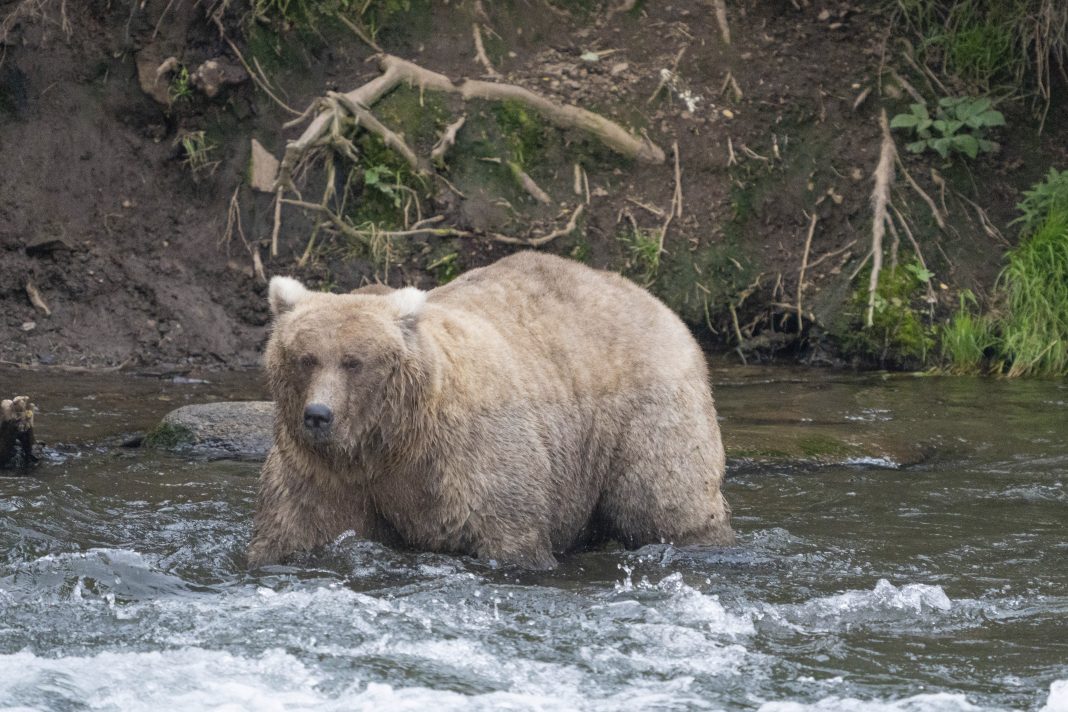As autumn approaches the remote wilderness of Alaska, a unique celebration emerges, drawing attention from around the globe: Fat Bear Week at Katmai National Park and Preserve. This annual event, which officially kicks off on October 2, serves as both a whimsical competition and a poignant reminder of nature’s beauty and the resilience of its creatures. With fans voting online in a tournament-style format, the festivities are not just a showcase of the park’s iconic brown bears but also a testament to the interconnectedness of wildlife and human engagement.
At the heart of this celebration are the bears themselves—specifically, the hefty brown bears that make Katmai their home. With a population of about 2,200, these majestic animals are known for their remarkable ability to fatten up in preparation for hibernation. Adult males typically weigh between 600 to 900 pounds during the summer months, and after gorging on the plentiful sockeye salmon that swim upstream to spawn, they can tip the scales at over 1,000 pounds by winter. In contrast, the females are generally smaller, weighing about a third less than their male counterparts.
This year’s Fat Bear Week promises excitement with a special focus on its junior contestants. The Fat Bear Jr. contest features four cubs, including last year’s junior champion, known as 909 Jr., who has garnered a following of his own. Although he is now nearly four years old, he still meets the criteria for the competition by remaining under the care of his aunt. This reflects a fascinating aspect of bear behavior; cubs typically stay with their mothers for approximately 2.5 years, showcasing the strong familial bonds present in bear society.
Notably, this year also includes an emotional narrative surrounding Grazer, the winner of the 2023 Fat Bear Contest. Grazer’s story is intertwined with tragedy, as one of his spring cubs met an untimely demise after an encounter with a dominant male bear named Chunk. This heartbreaking moment was captured on live cameras, highlighting the raw realities of life in the wild. Grazer’s fierce attempt to protect his cub from Chunk illustrates not only the instinctual behaviors of bears but also the dramatic struggles they face in their natural habitat.
As the event approaches, anticipation builds among the dedicated fans who have been observing these bears through live streams at explore.org throughout the summer months. Last year, the contest garnered over 1.3 million votes, reflecting a growing global interest in wildlife conservation and the unique stories that emerge from these natural settings. The ability to watch these creatures in real-time fosters a deeper appreciation for the challenges they face and the very real threats to their existence, from habitat loss to climate change.
The adult contestants for this year’s Fat Bear Week will be unveiled on September 30, with voting set to take place from October 2 to October 8. This format not only engages the public but also educates them about the bears’ lives and the ecological significance of their behaviors.
In a world increasingly disconnected from nature, events like Fat Bear Week serve as a bridge, allowing people to engage with wildlife in a meaningful way. The competition is more than just a celebration of size; it is a tribute to the survival instincts, familial bonds, and the harsh realities of life in the wild. As the bears prepare for their long winter slumber, we are reminded of the cycles of life that govern the natural world and the importance of preserving these magnificent creatures for future generations.
So, as we gear up for another exciting Fat Bear Week, let’s take a moment to reflect on the stories behind the bears, the challenges they face, and our role in ensuring their survival. After all, every vote cast during this playful competition contributes not only to the celebration of these majestic animals but also to the larger conversation about wildlife conservation and our shared responsibility to protect the natural world.


